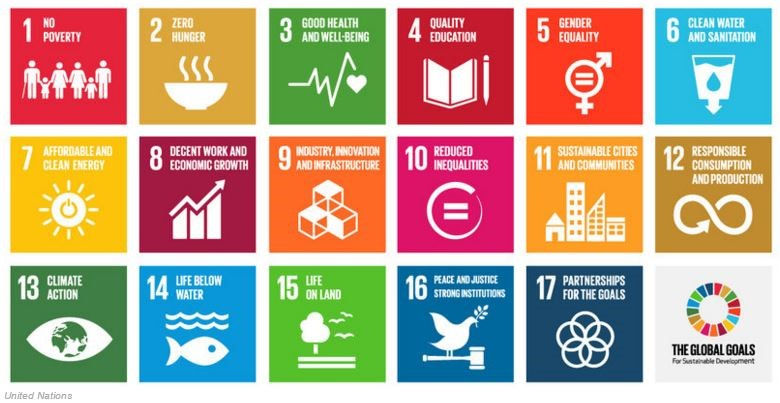Sustainable Development Goals: Lofty, and Someone's Gotta Give
- Melissa Walter
- Nov 6, 2015
- 5 min read
I need to start this post with a disclaimer: I'm the last person who should be writing about the recently approved United Nations (UN) Sustainable Development Goals. I live in my own little bubble, I know NOTHING about global politics, and not much more about global nutrition and agriculture. So let's figure this out together, shall we?!
In 2000, the UN Millenium Goals were adopted. They consisted of 8 goals targeted at the developing world and focused on poverty reduction, hunger, and infectious disease. All 189 UN member states and 23 international organizations committed to help achieve these by 2015.
And....it's now 2015. Were the goals met? Um....no. (http://www.un.org/millenniumgoals/2015_MDG_Report/pdf/MDG 2015 PC final.pdf) There HAS been great progress. Related to hunger alone, the UN cites a significant decline in undernutrition, from 23.3 percent in 1990–1992 to 12.9 percent in 2014–2016. Yet as of 2015, there are still about 800 million people worldwide living in extreme poverty and suffering from hunger. Of these, over 160 million children under age five have inadequate height for their age due to insufficient food.
So, it's time to set new goals, and try again! And apparently we think that targeting the entire world, rather than just developing nations, with the task of meeting SEVENTEEN goals (instead of the prior eight), with no less than ONE HUNDRED SIXTY NINE targets, will be easier! These seventeen Sustainable Development Goals (SDGs), below, again focus on the elimination of extreme poverty and hunger, as well as abolishing inequality and improving the multiple facets of the environment (among other things!), by 2030.

UN Sustainable Development Goals 2015 I know that I sound like a cynic. I should be excited! Look at number two: ZERO HUNGER. Eliminate worldwide hunger? What dietitian wouldn't think that's a pretty awesome goal? The targets within this goal include ending hunger by achieving food security, ending ALL forms of malnutrition, and improving agricultural systems, productivity, and diversity. I really do find those admirable goals--just a bit lofty. The Global Nutrition Report 2015 says, however, that it CAN be done--with significant political changes, increased funding, and partnerships among various sectors of development including agriculture, education, health, social protection, water, sanitation, and hygiene. These partnerships will help to address all seventeen goals, with synergistic effects. In fact, according to Shenggen Fan, Director General of the International Food Policy Research Institute, simply addressing the food system (part of Goal 2) will impact 12 of the 17 goals (http://www.hamk.fi/english/events/african-finnish-bioeconomy-and-agriculture-business-opportunities/Documents/2015%2009_Rethinking_the_Global_Food_System_in_Context_of_SDGs_Helsinki_Finland.pdf)! The Report describes this synergism as a "virtuous circle of escalating performance between improved nutrition status and sustainable development." If we are well-nourished, we will have the capacity to offer to more to our environment to drive sustainable development. If sustainable development is occurring, our environment will have the capacity to support our need for nourishment.
We can see how changes to our food system and the abolishment of hunger can impact many of these goals. But conversely, how can these various sectors participate in ending hunger? Certainly, ending poverty (Goal 1) would be a critical beginning. Providing social protection--defined as “all public and private initiatives that provide income or consumption transfers to the poor, protect the vulnerable against livelihood risks and enhance the social status and rights of the marginalized; with the overall objective of reducing the economic and social vulnerability of poor, vulnerable and marginalized groups”--would aid in reducing poverty, particularly when combined with sustainable agricultural initiatives worldwide. The Food and Agriculture Organization (FAO) of the UN says that a total investment of $267 billion per year for these programs ($160 per person living in extreme poverty, per year) for the next fifteen years, or 0.3 percent of the global GDP, would solve the problem. FAO Director-General José Graziano da Silva adds that "social protection in the form of cash transfers will eliminate hunger immediately, and will improve nutrition by allowing the poor to afford more diverse and thus healthier diets and also fight 'hidden hunger,'" or micronutrient deficiencies. Now determining who is going to pay for these initiatives is a bit trickier, when nations that have already committed funds to such initiatives aren't all paying up. But that's another blog post!
While I can't address all of these sectors in such a short space (am I even holding your attention now?), it's not difficult to see their impacts. Google "education level malnutrition" and look at the peer-reviewed studies that pop-up--page after page of global research. It's easy to see the impact that "ensuring equitable quality education for all" (Goal 4) would have on nutritional status. Gender equality (Goal 5)? According to Shenggen Fan, when we empower women in agriculture (and in their own households!) we see improved dietary diversity (thus improved micronutrient deficiencies) for women and girls; likewise, when we provide both income and nutrition education, we see reduced child stunting. Clean water and sanitation (Goal 6)? That will certainly improve nutrition, not only through the improvement in agricultural systems, but also in allowing individuals to cook and drink safely without contracting waterborne illnesses that lead to diarrheal disease and malnourishment (if not death). Economic Growth (Goal 8)? Back to that "No Poverty" goal, which impacts hunger. Responsible Consumption and Production (Goal 12)? Part of that is about simply making sure that there enough of everything to go around--and that includes food and the resources needed to grow or produce it. Climate (Goal 13)? Climate change affects extreme weather events, sea level changes, and food production, access, and utilization--which most of us don't notice related to our dietary intake (we can buy food from Chile or our own backyards every day, year 'round!). However, these things have a tremendous impact on both food and water access and infectious disease (thus nutritional status) for the most impoverished. Peace and Justice (Goal 16)? I'm sure that Afghans and Syrians could tell us more about how improvements on these fronts could impact their access to ANY food, let alone SAFE food. It's easy to see the overlap among all of these goals--and while I'm still a bit of a cynic about the idea that our global community will put their money where their mouths are in meeting all of these goals, the world will be a better place if we are able to make ANY amount of progress toward them.
One major problem with the MDGs was that there was a lack of accountability in meeting them. The Global Nutrition Report 2015 calls for the establishment of SMART goals in support of the SDGs, to allow for better measurement of progress and to make those RESPONSIBLE for meeting these goals also ACCOUNTABLE for what they do (or fail to do). The UN tracked and measured the MDGs each year--as I assume they will do with the SDGs--but I've not seen any sort of accountability for those who failed to either make or keep commitments, and I don't see talk of this for the future. Yet this appears to be a critical piece of the puzzle. FAO Director-General José Graziano da Silva notes that the status quo isn't good enough. "If we adopt a "business as usual" approach, by 2030, we would still have more than 650 million people suffering from hunger." Clearly, someone's gotta give.








Comments